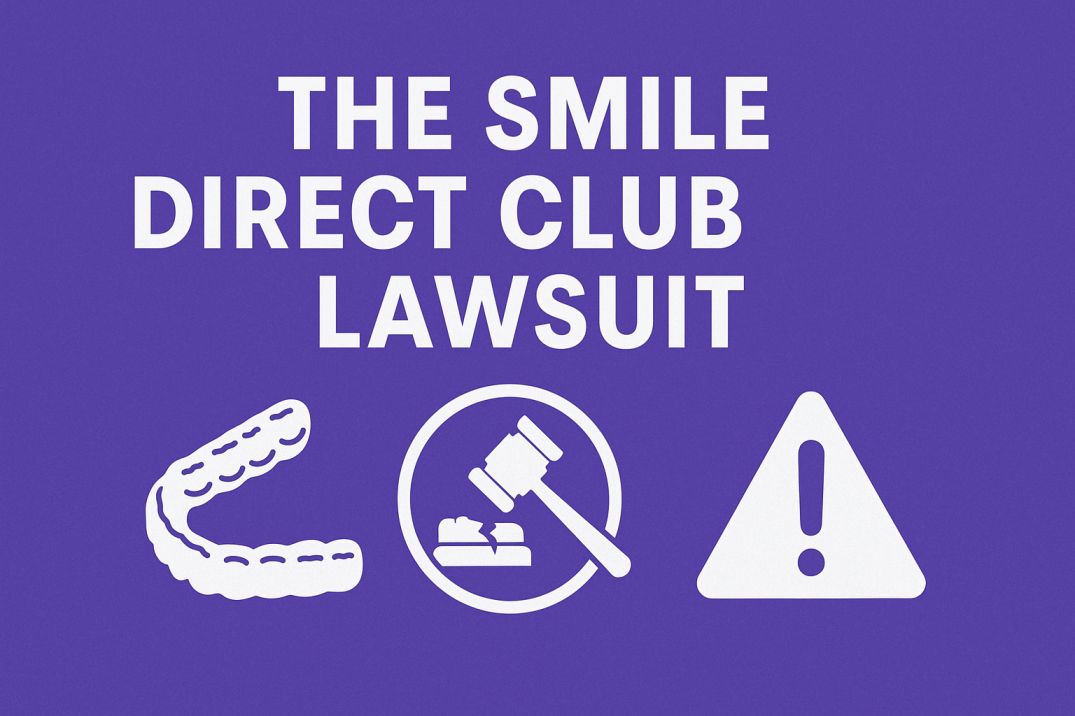What Was Smile Direct Club?
Smile Direct Club often shortened to Smile Direct or Direct Club launched in 2014. The goal? Offer affordable, mail-order clear aligners. No dental visits. No in-person fittings. Just impressions taken at home or in a SmileShop, then aligners shipped straight to your door.
They promised a straighter smile for less money—usually around $2,000. That was a big draw for people who couldn’t afford Invisalign or braces.
By 2019, Smile Direct Club had served over a million customers and even went public on the stock market.
But success didn’t last.
Why Did People Start Suing Smile Direct?
The Direct Club lawsuit problems started when customers claimed poor results and serious dental issues. These weren’t minor complaints.
Common lawsuit claims included:
-
Jaw pain
-
Misaligned bites
-
Tooth loss
-
TMJ (temporomandibular joint) disorder
-
Delayed or denied refund
Customers felt Smile Direct downplayed the risks. Some said the company made it too easy to skip seeing a real orthodontist or dentist.
Smile Direct responded by saying the problems were rare. But as more people shared their stories, legal trouble followed.
What Is the Main Smile Direct Club Lawsuit About?
There isn’t just one big lawsuit. Multiple legal cases popped up across the U.S., but here are the major ones:
1. Consumer Protection Lawsuits
These lawsuits claimed Smile Direct misled customers. The argument? The company said treatment was safe and dentist-supervised. But in reality, some users didn’t get proper oversight.
2. State Investigations
Over 35 state dental boards challenged Smile Direct’s model. They questioned if it violated laws that protect patient care. In many cases, the company was accused of “practicing dentistry without a license.”
3. Employee and Shareholder Lawsuits
Smile Direct also faced internal issues. A class action suit from shareholder claimed the company hid bad press and exaggerated success. Employee raised concern about aggressive sale tactics and high pressure refund.
Did Smile Direct Admit Fault?
No. The company denied wrongdoing. In many cases, they blamed dental boards or “misinformed customers.” But the legal and financial damage became too large to ignore.
In December 2023 Smile Direct Club filed for bankruptcy under Chapter 11. The company cited lawsuit slowing sale and rising operating cost.
How Many Customers Were Affected?
Smile Direct served over 2 million people. Most didn’t sue. But according to lawsuits and online reviews, thousands had problems. A 2022 Better Business Bureau report listed over 1,300 complaints related to:
-
Poor customer service
-
Delayed shipments
-
Results not matching promised outcomes
In some forum like Reddit user shared before and after photo showing worsened smile not better one.
What Can We Learn From the Smile Direct Lawsuit?
The Pros of Smile Direct’s Idea:
-
Cheaper than traditional braces
-
No in-office visits
-
Faster turnaround (4–6 months for some)
The Cons (and legal issues):
-
Limited dentist involvement
-
No X-rays required
-
Lack of ongoing supervision
-
Refund difficulties
-
Risk of serious dental damage
The idea worked for some. But it failed others, especially people with complex dental needs.
What Should You Do If You Used Smile Direct?
If you had a negative experience you are not alone. Here what to do:
-
Gather Record: Save email invoice and aligner instruction.
-
See a Dentist: Get a full evaluation to assess any damage.
-
Contact a Lawyer: Several law firms are still collecting claims from former users.
-
Monitor Bankruptcy Proceedings: Smile Direct’s Chapter 11 may affect refund options or class-action compensation.
Many users are still waiting for updates.
Will Smile Direct Ever Come Back?
As of now, Smile Direct is no longer taking new customers. They shut down most operations after the bankruptcy filing.
The website is limited, and SmileShops are closed. Customers were told to finish their treatment if they already had aligners—but no new shipments were guaranteed.
Industry insiders say Smile Direct may sell its assets or rebrand. But trust has been damaged.
What Does This Mean for Teledentistry?
Teledentistry isn’t dead—but it has to evolve.
Key takeaways for future companies:
-
Real dentist involvement is essential
-
Transparency builds trust
-
High-risk treatments need oversight
Consumers want convenience—but not at the cost of safety. The Smile Direct lawsuit taught the entire industry a hard lesson.
Final Thoughts
The story behind The Smile Direct Club Lawsuit isn’t just about a company going bankrupt. It’s a wake-up call for anyone thinking about teledentistry.
Smile Direct promised fast, cheap, and convenient smile fixes. But many customers ended up with pain, dental issues, and broken trust. This case shows what happens when companies prioritize speed and profit over proper care.
Shortcuts in healthcare come with serious risks. Your teeth bite and jaw are complex. Skipping X ray or dentist visit may save money now but it could cost you much more later in damage and repair.
What can you do to stay safe
-
Always research teledentistry companies. Read reviews. Look into their credentials.
-
Make sure real dentists are involved. Ask how often they check your progress.
-
Don’t ignore pain or red flag. Talk to a local dentist if something feel off.
-
Avoid one size fit all treatment. Everyone mouth is different.
If you had problems with Smile Direct:
Now is the time to act. Gather your records. Get a full dental checkup. And talk to a lawyer. You may still qualify to join an active lawsuit or receive compensation through bankruptcy claims.
Don’t wait—some legal deadlines are approaching fast.

